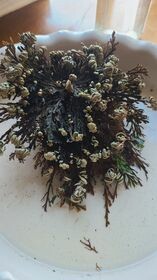
Fall as arrived and you might feel yourself naturally beginning to pull in or pull back. Cozy sweaters and sweatpants with hot cocoa or a bowl of chili sounds like a great afternoon to me!
It’s a natural inclination we have as the days get shorter and colder. It’s sort of a preparation for the dormancy of winter. Though we don’t hibernate like bears (well most of don’t) winter is a time for more rest. Our bodies are naturally in tune with seasonal cycles.
Sometimes we can get off cycle. Maybe you switched to nightshift. Maybe you are grieving a loss. Maybe you are experiencing depression. Maybe you ran hard on a project at work or vacation. Maybe you moved to a new community or got lost in your kids extracurriculars or were hurt by a friend. Anything can throw us off cycle and entice us to withdraw and pull back.
Ups and downs and highs and lows are part of life. We love the highs and the ups but we need the downs and the lows to bring balance. Now I don’t wish pain and suffering on anyone. We need opposites to really appreciate the good and joyous. We need sadness to understand happy, we need grief to understand the blessings of joy. When we reflect on those things that bring us down (not obsess), we can use those down times provide us with opportunity to heal. We all need time for rest and rejuvenation.
Recently, I was intrigued by this little guy. This little tumbleweed of a plant is full of inspiration. It’s called the Rose of Jericho or the Resurrection plant.
Curiosity and and learning can bring us joy so let’s learn from britanica.com about this plant. I can’t remember the last time I used the encyclopedia!
“rose of Jericho, also called resurrection plant, either of two species of unrelated plants known for their ability to survive dessication. The true rose of Jericho (Anastatica hierochuntica) is native to western Asia and is the only species of the genus Anastatica of the mustard family (Brassicaceae). The small gray plant curls its branches and seedpods inward in the dry season, forming a ball that opens only when moistened. It can survive for years in that form, though it is sometimes uprooted and blown by the wind like a tumbleweed. If still rooted when moistened, it spreads into a green plant as much as 30 cm (1 foot) wide and bears minute white flowers.
False rose of Jericho, or resurrection fern (Selaginella lepidophylla), is native to the Chihuahuan Desert of the United States and Mexico and is a member of the spike moss family (Selaginellaceae). During dry weather its stems curl into a tight ball and the plant enters a period of dormancy. It too can become a tumbleweed, but unlike the true rose of Jericho, S. lepidophylla can revive in the presence of moisture even if its roots have been disrupted. The plant is green and fernlike in appearance and reproduces by spores, and it is often sold as a curiosity.”
This plant is able to survive desiccation. It can survive that way for years. With a little bit of moisture, with a little bit of water it comes alive again.
 I feel like there is hope in the life cycle of the resurrection plant. Maybe you have been laying dormant for a while. Maybe your low season has lasted years instead of season. If that’s the case you need only find your fountain, the source of what gives you strength and inspiration to open up and begin again.
I feel like there is hope in the life cycle of the resurrection plant. Maybe you have been laying dormant for a while. Maybe your low season has lasted years instead of season. If that’s the case you need only find your fountain, the source of what gives you strength and inspiration to open up and begin again.You can do it. I believe in you. I am rooting for you! I’m here to help.
Reach out, comment below, go back and read some of my past blogs about joy. Join our Facebook group, Joy for Everyday Women. Begin your aromatherapy regime.
May you find the fount of your joy today!
Britannica, The Editors of Encyclopaedia. "rose of Jericho". Encyclopedia Britannica, 31 Jan. 2022, https://www.britannica.com/plant/rose-of-Jericho. Accessed 13 October 2022.














0 Comments